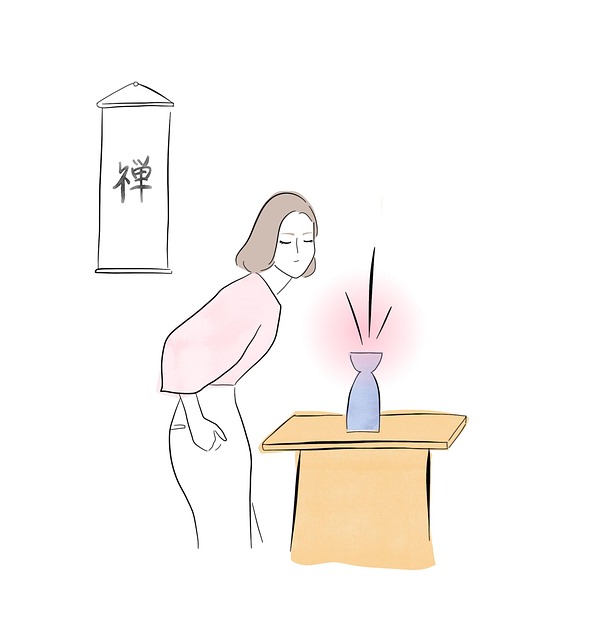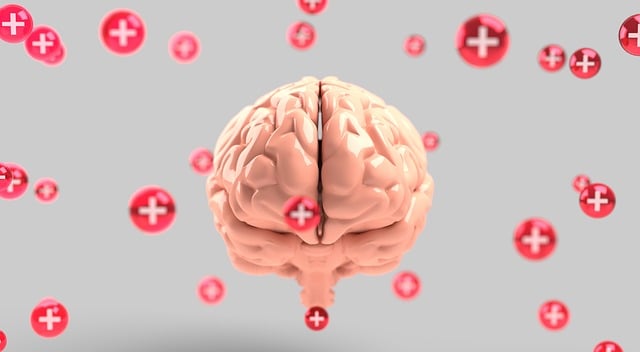Castle Rock Panic Disorder (CRPD) is a debilitating anxiety condition characterized by unexpected panic attacks causing intense fear and physical symptoms. CRPD therapy focuses on mindfulness meditation, self-reflection, and cognitive behavioral therapy (CBT) to empower individuals with strategies to overcome their disorder. Positive thinking, including practices like meditation, gratitude journaling, and mental wellness podcasts, reduces stress hormone levels, promotes mindfulness, and builds resilience, ultimately aiming for lasting anxiety relief. Implementing daily positive thinking exercises, starting small with 10-15 minutes of mindfulness or affirmations each morning, significantly benefits mental health and reduces the frequency and intensity of anxiety attacks in CRPD patients.
Positive thinking exercises offer a powerful tool in managing Castle Rock Panic Disorder and anxiety attacks. This article delves into the transformative potential of positive thinking as a therapy, providing insights into how it can help overcome anxiety. We explore strategies for building a solid mindset foundation, daily implementation techniques, and long-term benefits. By integrating these practices, individuals can enhance their well-being and effectively navigate anxiety disorders.
- Understanding Castle Rock Panic Disorder and Anxiety Attacks
- The Power of Positive Thinking in Overcoming Anxiety
- Building a Solid Foundation: Strategies for Positive Mindset
- Implementing Positive Thinking Exercises Daily
- Long-term Benefits and Continuous Practice Techniques
Understanding Castle Rock Panic Disorder and Anxiety Attacks

Castle Rock Panic Disorder (CRPD) is a severe form of anxiety characterized by sudden and recurrent panic attacks that seem to strike out of nowhere. These attacks are intense periods of fear or discomfort, often accompanied by physical symptoms like rapid heartbeat, sweating, and shortness of breath. CRPD can significantly impact daily life, as the recurring panic episodes can leave individuals feeling constantly on edge and afraid. The disorder’s name comes from the metaphorical ‘castle rock’—a solid, unchangeable foundation—representing the overwhelming sense of fear that seems to encapsulate people during an attack.
Therapy plays a pivotal role in managing CRPD and Anxiety Attacks. Techniques such as Mindfulness Meditation can be powerful tools for calming the mind and body, helping individuals gain better control over their emotional responses. By focusing on the present moment and accepting thoughts without judgment, mindfulness meditation enhances one’s ability to manage anxiety symptoms. Additionally, Emotional Healing Processes that encourage self-reflection and understanding can equip people with strategies to confront and overcome CRPD. Ultimately, these therapeutic approaches aim to provide long-lasting anxiety relief and empower individuals to live more fulfilling lives free from the constant shadow of panic.
The Power of Positive Thinking in Overcoming Anxiety

Positive thinking is a powerful tool in the arsenal of anyone dealing with anxiety, particularly conditions like Castle Rock Panic Disorder and Anxiety Attacks. By shifting one’s mindset from negative to positive thoughts, individuals can dramatically alter their emotional responses and overall mental wellness. This simple yet profound change can transform anxious moments into manageable experiences. Research has shown that optimism and positive affirmations can reduce the impact of stress hormones, thus calming the mind and body.
Incorporating practices like meditation, gratitude journaling, or even engaging in a Mental Wellness Podcast Series Production, designed to promote resilience building, can help individuals cultivate a more positive outlook. These activities encourage mindfulness, self-reflection, and an appreciation for life’s positives—all of which are essential components of Mental Health Education Programs Design. By regularly practicing these exercises, people with anxiety disorders can develop the mental fortitude to navigate challenging situations, ultimately leading to improved quality of life.
Building a Solid Foundation: Strategies for Positive Mindset

Building a solid foundation for positive thinking is essential, especially when addressing issues like Castle Rock Panic Disorder and Anxiety Attacks Therapy. It’s not just about changing thoughts; it’s about cultivating a mindset that supports resilience and well-being. Therapies like Cognitive Behavioral Therapy (CBT) can help individuals challenge negative thought patterns and replace them with more realistic and positive ones. This process lays the groundwork for self-care practices, enabling folks to better manage their symptoms and improve their quality of life.
The development of inner strength and coping skills is pivotal in this journey. By incorporating daily mindfulness exercises, engaging in regular physical activity, and fostering supportive relationships, individuals can build a robust defense against anxiety. These self-care practices not only help in managing stress but also empower individuals to navigate challenging situations with greater ease, fostering a more positive outlook on life.
Implementing Positive Thinking Exercises Daily

Incorporating daily positive thinking exercises into your routine can significantly benefit mental health, especially for those managing conditions like Castle Rock Panic Disorder and Anxiety Attacks. Starting small, perhaps with just 10-15 minutes each morning, dedicated to mindfulness or affirmations, can make a noticeable difference over time. These practices encourage individuals to challenge negative thought patterns, fostering a more optimistic outlook that resonates throughout the day.
Consistent engagement in such exercises enhances resilience against stressors and triggers, a key aspect of effective therapy for anxiety disorders. Social Skills Training and Risk Management Planning for Mental Health Professionals can further bolster this process by teaching practical tools for stress management. By integrating these strategies into daily life, individuals gain a sense of control over their mental well-being, ultimately reducing the intensity and frequency of anxiety episodes, such as those experienced in Castle Rock Panic Disorder.
Long-term Benefits and Continuous Practice Techniques

Implementing positive thinking exercises can lead to significant long-term benefits for individuals dealing with anxiety and panic disorders, such as Castle Rock Panic Disorder. Regular practice has been shown to reduce the frequency and intensity of anxiety attacks, fostering a sense of control and resilience in managing these conditions. Studies suggest that cultivating a positive mindset enhances overall well-being, improves coping mechanisms, and even promotes physical health by strengthening the immune system.
Continuous practice techniques can include incorporating mindfulness meditation, gratitude journaling, and cognitive reframing into daily routines. These exercises not only help manage existing symptoms but also serve as powerful tools for Depression Prevention. Many organizations now offer Stress Management Workshops that emphasize these practices, often paired with Community Outreach Program Implementations to ensure accessibility and support for those in need.
Positive thinking exercises offer a powerful tool in managing and overcoming Castle Rock Panic Disorder and Anxiety Attacks. By integrating these strategies into daily routines, individuals can build resilience, foster a sense of calm, and significantly enhance their well-being. Continuous practice, combined with long-term benefits like improved mental fortitude and reduced anxiety symptoms, makes positive thinking a valuable component of any therapy approach for this condition. Embracing these exercises enables folks to navigate life’s challenges with greater confidence and composure.














